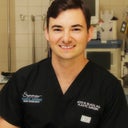Im a transgender woman, I'm considering getting plastic surgery this year (tracheal shave), however I'm a bit afraid to get it done because my Adam's apple it's too big, what are the risk for complications and will a surgery shave it all? Or just half? I don't want to have something done to still have it , I'm in Florida
Answers (9)
From board-certified doctors and trusted medical professionals
Dr. Parker A. Velargo, MD, FACS

Dr. Parker A. Velargo, MD, FACS
Board Certified Facial Plastic Surgeon
Answer
Dr. Bryan Rolfes, MD

Dr. Bryan Rolfes, MD
Board Certified Facial Plastic Surgeon
Answer
Dr. Philip Solomon, MD, FRCS

Dr. Philip Solomon, MD, FRCS
Certified Facial Plastic Surgeon
Answer
Dr. Vartan Mardirossian, MD

Dr. Vartan Mardirossian, MD
Board Certified Facial Plastic Surgeon
Answer
Dr. Sarah Saxon, MD
Dr. Sarah Saxon, MD
Board Certified Facial Plastic Surgeon
Answer
Dr. Rob Knight, MBBS, MD, FRACS(Plast)
Dr. Rob Knight, MBBS, MD, FRACS(Plast)
Specialist Plastic Surgeon
Answer
Dr. Robert H. Hunsaker, MD
Dr. Robert H. Hunsaker, MD
Board Certified Plastic Surgeon
Answer
Dr. Michael Eisemann, MD
Dr. Michael Eisemann, MD
Board Certified Plastic Surgeon
Answer
More Adam's Apple Reduction Questions
See all Adam's Apple Reduction Q&AWE SEND PRETTY
EMAILS
What’s trending? Who’s turning heads? Which TikTok myths need busting? We’ve got you. No fluff, no gatekeeping—just real talk. Get our free, unfiltered newsletter.
